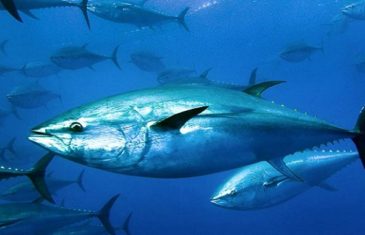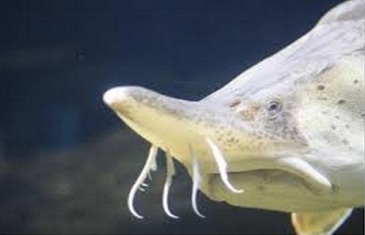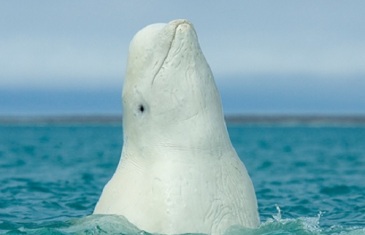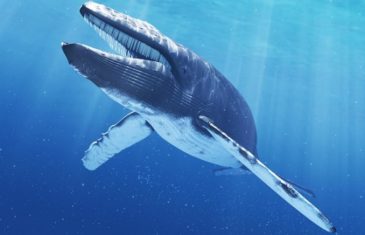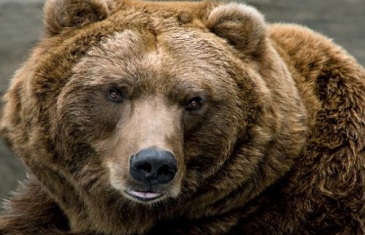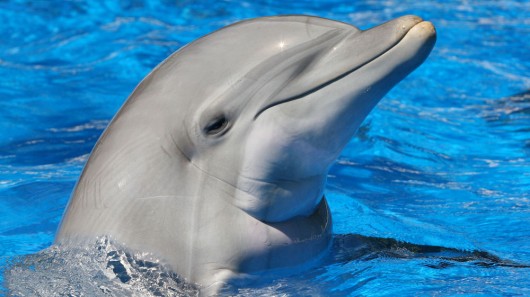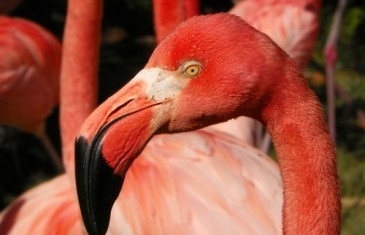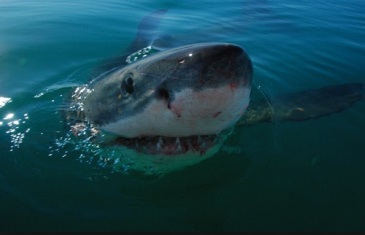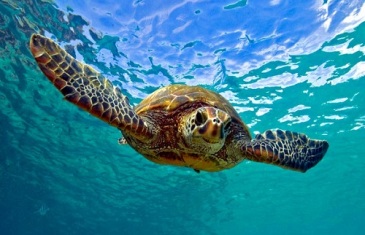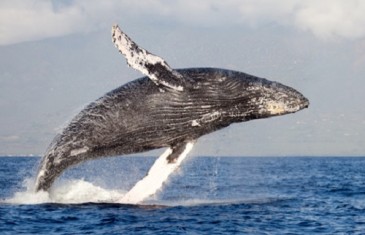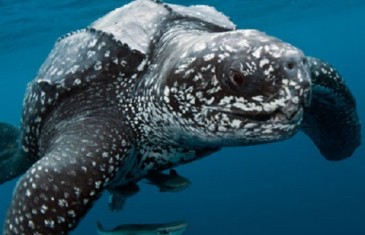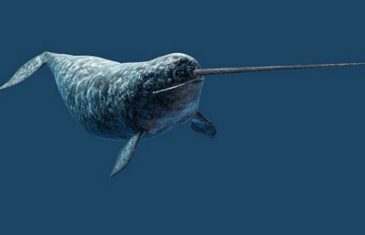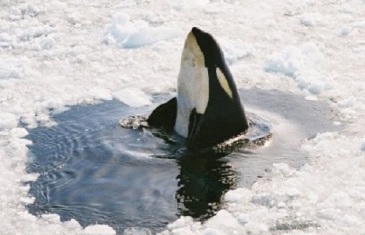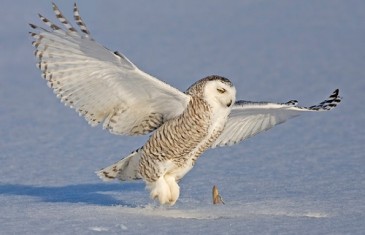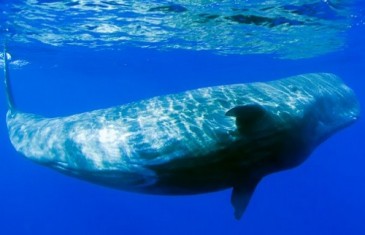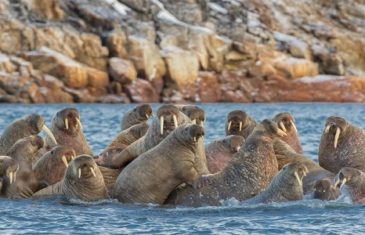0 o Name Common name: Atlantic Bluefin Tuna Scientific name: Thunnus thynnus Population and Conservation Status The Atlantic Bluefin Tuna is a highly valuable species in the Japanese sashimi market which has been overfished across its range. According to the IUCN as of 2010 there has been a decline of up to 51% over the past […]
Read more0 Taxonomy Kingdom: Animalia Phylum: Chordata Class: Actinoptergii Order: Acipenseridae Genus: Huso Species: Huso huso Name Scientific name: Huso huso. Common name: Beluga sturgeon, great sturgeon, giant sturgeon, European sturgeon. 0 Habitat and Distribution The Beluga sturgeon is native to the Black, Caspian, Azov and Adriatic Seas. Historically they have spawn in the Danube, […]
Read moreTaxonomy Kingdon: Animalia Phylum: Chordata Class: Mammalia Order: Cetacea Family: Monodontidae Genus: Delphinapterus Species: Delphinapterus leucas Name Common name: White whale, beluga whale. Its name comes from the Russian world “beloye” meaning white. Scientific name: Delphinapterus leucas. Delphinapterus means dolphin without a wing – or dorsal fin. Habitat and Distribution Beluga whales are widely […]
Read moreBlue Whale are the largest animals to have ever existed on earth, due to its size there are no Blue Whales in captivity. These animals are also the loudest animals on earth. During the 20th century the species was almost exterminated due to commercial whaling. Blue Whales can be found in all major oceans of […]
Read moreTaxonomy 0 Kingdom Phylum Class Order Family Genus Species Animalia Chordata Mammalia Carnivora Ursidae Ursus Ursus arctos 0 Name Common name: Brown bear, grizzly, grizzly bear. Scientific name: Ursus arctos. Distribution The brown bear has a circumpolar distribution historically covering most of North America, northern Asia, Europe, the Atlas Mountains of North Africa […]
Read moreTaxonomy Kingdom: Animalia Phylum: Chordata Class: Mammalia Order: Cetacea Suborder: Odontoceti Family: Delphinidae, Inidae, Lipotidae, Plantanstidae, Pontoporiidae. 0 0 Distribution and Habitat There are 42 species of dolphins found around the world. Of those, 38 are marine dolphins and 4 are river dolphins. Dolphins are found worldwide and thrive in shallow seas where weather is […]
Read moreo o Population and Conservation Status Chilean flamingo (Phoenicopterus chilensis) – Near Threatened. The Chilean flamingo breeds erratically and irregularly. The IUCN estimates a total population of 300,000 individuals. Caribbean flamingo (Phoenicopterus ruber ruber) – Least Concern. This species has a large range with an increasing population. Lesser flamingo (Phoeniconaias minor) – Near Threatened. Decreasing […]
Read more0 Taxonomy Kingdom: Animalia Phylum: Chordata Class: Chondrichthyes Order: Lamniformes Family: Lamnidae Genus: Carcharodon Species: Carcharodon carcharias Name Common name: Great white shark, white shark, white pointer or great white. Scientific name: Carcharodon carcharias. 0 Physical Features The white shark has a dorsal fin on top of its body, two pectoral fins at the bottom […]
Read more0 Taxonomy Family: Animalia Phylum: Chordata Class: Reptilia Order: Testudines Family: Cheloniidae Genus: Chelonia Species: Chelonia mydas 0 Name Scientific name: Chelonia mydas Common name: Green turtle, green sea turtle, black sea turtle. Habitat and Distribution Its habitat extends throughout tropical and subtropical seas. They stay along the coast and islands between 30 degrees north and […]
Read moreInteresting Facts The Hawsksbill Sea Turtle is the most endangered of all the turtle species. Its population has declined over 80% in a century. One of the most important reasons for the global decline of the Hawksbill Sea Turtle has been the high demand for its richly patterned shell. It is used in a variety […]
Read moreo o Name Scientific name: Megaptera novaenanglia. Megaptera is derived from the Greek mega for “large” and pteron for “wing”. Novaeangliae for New England where the humpback was first described scientifically. Common name: Humpback whale, hump whale, hunchbacked whale. Conservation Status The humpback whale is listed as Least Concern by the IUCN. Its status was […]
Read moreo o Name Common name: Leatherback, Leatherback Sea Turtle, Leathery Turtle, Trunkback Turtle, Coffinback, Luth. Scientific name: Dermochelys coriacea Conservation Status by Subpopulations East Pacific Ocean subpopulation: Critically Endangered. Nesting females and nests declined by 97.4% during the past three generations. Northeast Indian Ocean subpopulation: Data Deficient. There is insufficient reliable trend data of […]
Read moreTaxonomy Kingdom Phylum Class Order Family Genus Species Animalia Chordata Mammalia Artiodactyla Monodontidae Monodon Monodon monoceros Interesting facts During winter sometimes narwhals get trapped under fast forming pack ice. They attempt to keep the breathing hole open with their tusks but die of exhaustion and suffocation unable to breathe. Tusks are overgrown teeth. […]
Read more0 Name Scientific name: Orcinus orca Common name: Orca whale, killer whale. Taxonomy Kingdom: Animalia Phylum: Chordata Class: Mammalia Order: Cetacea Suborder: Odontoceti Family: Delphinidae Genus: Orcinus Species: Orcinus orca 0 Physical Features The orca whale is the largest member of the dolphin family. They have large black body with white belly and a grey […]
Read moreConservation Status The snowy owl (Bobus scandiacus) has a wide distribution and healthy population numbers, though its trend is declining. According to the IUCN its global population is estimated at more than 300,000 individuals. It does not meet the criteria for Vulnerable and it is listed as Least Concern by the IUCN Red List of Endangered […]
Read moreName Common name: Sperm Whale, Spermacet Whale, Cachelot, Pot Whale. “Spermaceti”, the organ in the head of the whale which contains an oily liquid once believed to be sperm. Scientific name: Physeter macrocephalus. Physeter is derived from the Greek word for “blowpipe or blowhole” Macrocephalus is derived from Greek meaning “big head”. Conservation Status […]
Read more0 Conservation Status Walruses have been part of the culture of many indigenous Arctic cultures for thousands of years. They have hunted them for their meat, skin, blubber, tusks and bones. During the 19th and early 20th century its population was rapidly depleted. The Pacific species has rebounded since then but the Atlantic and Laptev […]
Read more